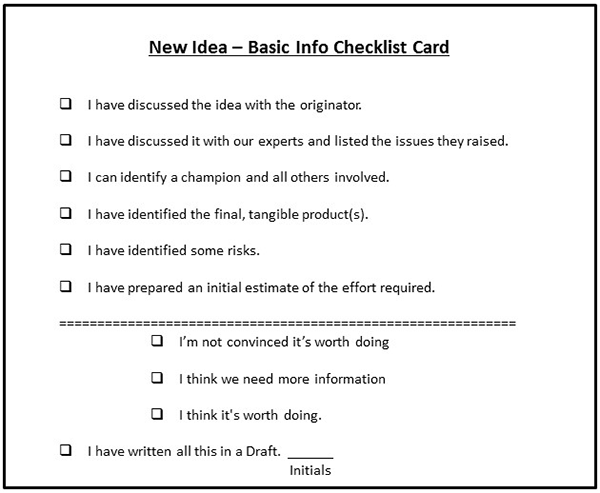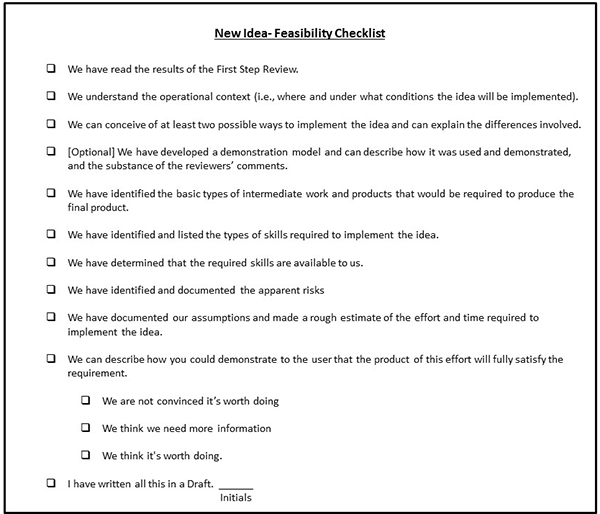Evaluating New Ideas
By Bill Flury
A New Idea Arrives
Beth hurries into her team lead’s office all excited. She’s just come back from visiting Roger, her number one favorite client. She tells him that Roger has a great idea for a new App for his customer Service Group. The idea involves capturing incoming phone call area codes and matching them with certain census data to generate more information about the people who call in for customer service.
Beth says that Roger apparently had heard about one of his competitors doing this and wants us to get on it right away. It sounds like a good idea, but is it really? How can they tell? How do you figure out if a new idea will be a good project for you?
A Process for Evaluating New Ideas
If your organization has documented the process for evaluating new ideas, you would start by working through that process. If your organization has never agreed on an approach and documented an idea evaluation process you have a problem. You have to figure out an evaluation process on your own and hope that it will work.
Beth and her team lead have a process for evaluating new ideas. They follow that process for all new ideas – and the process works. Only ideas that will lead to good projects make it through their screening process. They have a great success record. Maybe it would be helpful for you to read on and see how their process works and take notes.
Step One in the Process: Collect Basic Information
Beth’s process calls for the orderly collection of certain information about the new idea. Over the next few days (or sooner if it is urgent) she will do what is called for and will complete the checklist provided on the New Idea – Basic Info Checklist Card. When she has finished this she will meet with her team lead again to discuss what she has found out.

When Beth has done her homework and checked off all these items she will meet with her team lead to review what she has found out. If they decide not to proceed, Beth and her team lead will go back together to visit their client, Roger, and explain their thinking. They will discuss their issues and concerns with Roger. They will jointly decide to continue onward, resolve some open issues and meet again, or drop the idea.
If they agree to go ahead, they will take the next step in the process. The team lead will ask some of the team members with special skills to help Beth work through a second checklist. The second checklist reminds them of the things they need to consider about the feasibility of successfully realizing the benefits of the idea.
Step Two in the Process: Consider Project Feasibility
In the second step in the New Idea evaluation process the team members bring their specialties to bear to generate the information required to estimate the feasibility of successfully executing the idea. They start with the information collected in the first step and minutes of the discussions during the first step review. This is definitely a team effort and all the results are shared among all the team members. However, the team lead makes one person responsible for leading the effort and completing and initialing the checklist.

When the second checklist is completed the team lead will have the information needed to decide if this is a good project idea – or is it one that just sounded good when we first heard it but should be buried along with many others that really aren’t.
The two questions you always have to ask about a new idea are:
1) Is it appropriate and sound? and
2) Can we implement it successfully?
These two checklists and this process can help you answer those questions and help you find the ideas that are really good for you and your clients.
Do you have a different process to help you weigh the potential of your projects? Share below!

Full Course: Putting the Cart After the Horse: Project Scope Definition and
Schedule Development (1 day)
Click here for our full list of available courses!





